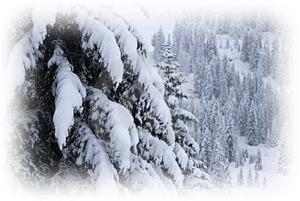A theme that courses through the poems in The Art of Darkness section of my book is the desire to decreate myself, to experience a “soft retreat of senses/And a slow dance to/Self and lessness.” In “Prelude,” I write of my “discovery/And subsequent/Shedding of self.” I expressed this sentiment in various poems in the early 80’s during a dark but prolific period of writing.
In her book Decreation: Poetry, Essays, Opera Anne Carson states that “Getting the self out of the way allows one to lose one’s hold on meaning so as to open up other paths of significance.” (Carson, Anne. Decreation: Poetry, Essays, Opera. Vintage. 2006)
My desire to “become real/And less, much less” calls to mind Wallace Stevens’ poem “The Snowman” which takes decreation and metaphysics to a lofty and mysterious height.
In Wallace Stevens’ poem “The Snow Man,” he proposes to the reader a paradoxical flight into and away from the imagination, causing a few of my former seminar students to experience an “existential crisis” for days. Stevens challenges the reader to accept the premise that one has to decreate oneself to become part of something else in that “else’s” purist state. To bring one’s emotions, thoughts, and historical framework to the wintry scene of the poem would corrupt the scene. To become the snowman, the listener or “beholder” must become “nothing himself” to behold “Nothing that is not there and the nothing that is.”

The Snow Man
BY WALLACE STEVENS
One must have a mind of winter
To regard the frost and the boughs
Of the pine-trees crusted with snow;
And have been cold a long time
To behold the junipers shagged with ice,
The spruces rough in the distant glitter
Of the January sun; and not to think
Of any misery in the sound of the wind,
In the sound of a few leaves,
Which is the sound of the land
Full of the same wind
That is blowing in the same bare place
For the listener, who listens in the snow,
And, nothing himself, beholds
Nothing that is not there and the nothing that is.
Robert Pack in Wallace Stevens: An Approach to His Poetry and Thought interprets that final line for us.
In the remarkable poem “The Snow Man,” Steven dramatizes the action of a mind as it becomes one with the scene it perceives, and at that instant, the mind having ceased to bring something of itself to the scene, the scene then ceases to exist fully….when he sees the winter scene reduced to absolute fact, as the object not of the mind, but of the perfect perceptual eye that sees “nothing that is not there,” then the scene, devoid of its imaginative correspondences, has become “the nothing that is.” (Robert Pack. Wallace Stevens: An approach to his poetry and thought. New Brunswick: Rutgers UP, 1958. Copyright © 1958 by Rutgers, The State University.)
John Gery, in his work Ways of Nothingness: Nuclear Annihilation and Contemporary American Poetry offers a slightly different interpretation. Regarding the listener, he states:
To say he beholds “‘nothing that is not there” implies that he beholds only that which is there and nothing else: such a listener perceives only what is before him. On the other hand, to say he beholds “the nothing that is” (or some thing that is not there) can only mean that he beholds that which is not there, namely, nothingness–an absence which, for Stevens, is an imaginary, not a real, state of being. As Michael Davidson explains it, these “double negatives literally produce a ‘nothing’ that is both full and empty at the same time.” No matter how we rephrase the line, the listener must admit to beholding these two phenomena of antipathetic natures–that which is only available to sense perception and that which is not available to sense perception but to the imagination….Stevens concerns himself with an erasure of the imagination without feeling compelled also to consider that state of unimaginable nothingness beyond good and evil we call annihilation.”
John Gery. Ways of Nothingness: Nuclear Annihilation and Contemporary American Poetry. Gainesville: University Press of Florida, 1996. Copyright © 1996 by the Board of Regents of the State of Florida.
I am intrigued by the fact that I explored the concept of decreation in the early 1980’s, thirty years before I would read “The Snowman” or even learn about the concept of decreation. I am now trying to sift through Anne Carson’s book for other relevant pearls of wisdom hidden amid the obscure classical references and opera format.

Recent Comments